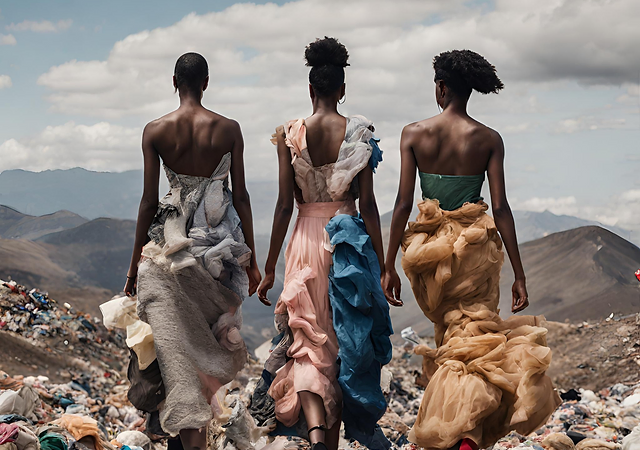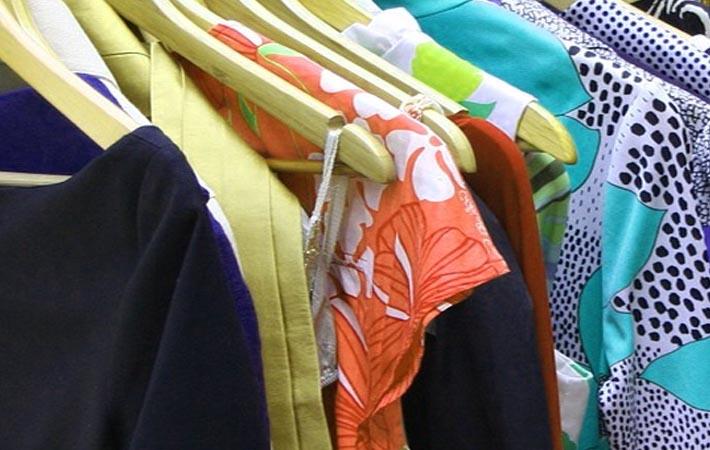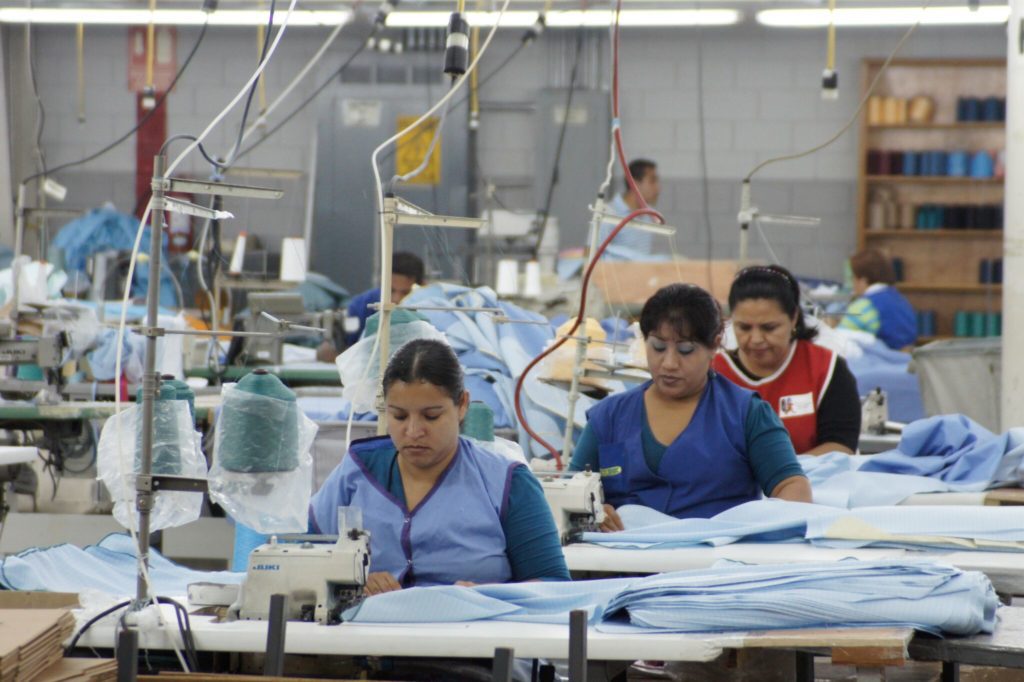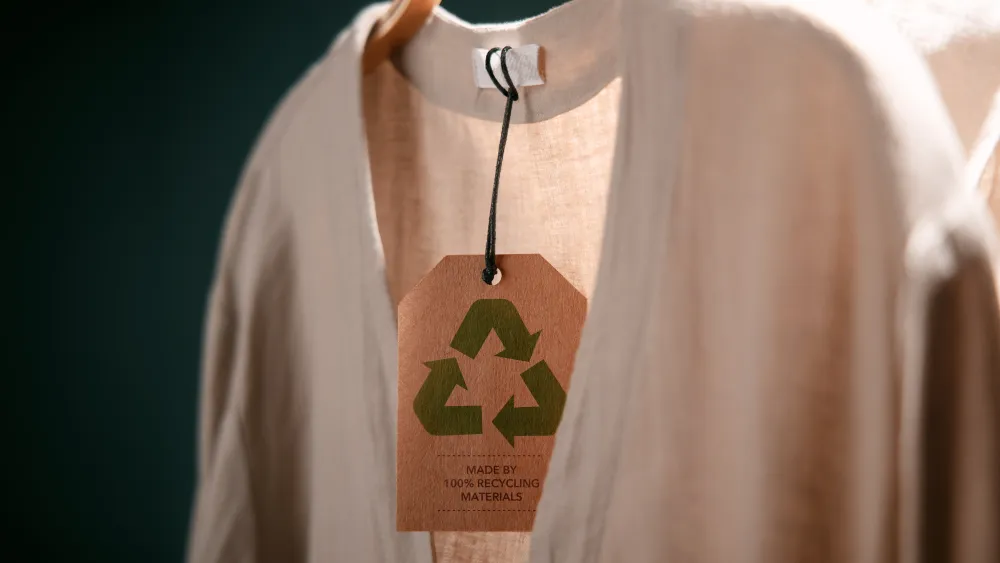FW
Lineapelle is set to launch its autumn/winter 2025/2026 season with key events in London and New York, ahead of the main event in Milan this September. The first event, Lineapelle London, will take place on Tuesday, July 9, at the Ham Yard Hotel.
This event will feature 42 exhibitors, including 26 from Italy, with a strong presence of tanneries, fabric, synthetic producers, and accessory makers. Two fashion presentations will unveil the new trends encapsulated in the theme "An Intelligent Heart," emphasizing the integration of artificial intelligence with human emotion in the creative process.
The second event, Lineapelle New York, is scheduled for Wednesday, July 17, and Thursday, July 18, at the Metropolitan Pavilion in Manhattan. This 45th edition will host over 110 exhibitors from across the globe, including Italy, France, Spain, and the USA.
Despite economic challenges, the event remains crucial for the US market, showcasing trends through three creative seminars focused on "artisanal intelligence" and hands-on "In the Making" workshops in collaboration with Giorgio Linea.
Both events serve as precursors to the September edition of Lineapelle Milano, the premier global trade fair for luxury, fashion, and design manufacturing. The Milan event, scheduled for September 17-19 at Fiera Milano Rho, will feature a rich agenda and synergy with Simac Tanning Tech, celebrating its 50th edition.
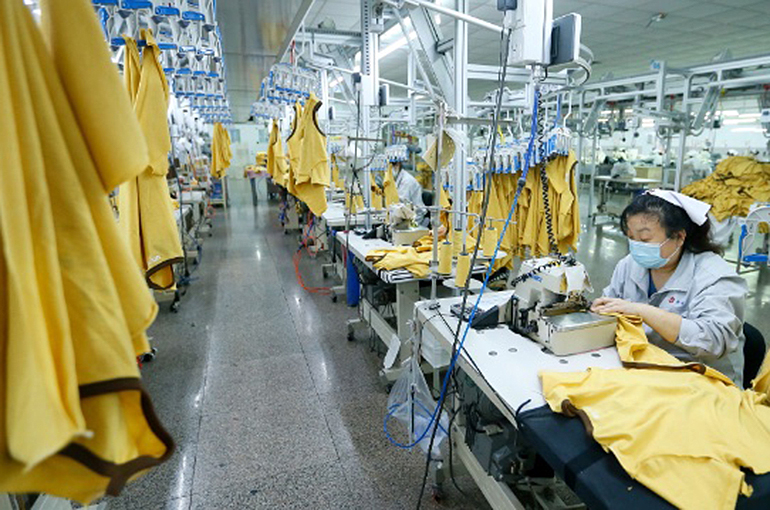
China's textile and apparel exports witnessed significant increase in May 2024, according to converted export volume data. All three major segments – fibers, textiles, and clothing – displayed growth compared to both the previous month and the same period last year.
Finished fabric products led the increase, boasting of the fastest year-on-year growth rate. Yarns and fabrics, on the other hand, displayed a weaker performance. Notably, used clothing exports witnessed a remarkable increase within this segment.
Export volume grows across categories
There was a significant rise in export volume year-on-year (YoY) and month-on-month (MoM) across all major categories. While growth rates varied slightly between segments, the overall trend was positive. Interestingly, the year-on-year growth rate for May surpassed the combined growth rate for the year up to that point across categories. This indicates a significant acceleration in exports specifically for the month of May.
As pointed out, finished fabric products remained the fastest-growing segment, followed by apparel and then yarns and fabrics. In subcategory used clothing exports witnessed a particularly notable increase, both YoY and MoM.
Seasonal upward trends were observed, the year-on-year and month-on-month growth suggests a potential seasonal upswing in exports potentially influenced by shipping delays due to maritime congestion in April and May. From January to May, fabric and other textiles performed the best, while fibers and yarns (especially polyester filament exports) lagged behind. Apparel growth fell in the middle.
Table: Top 5 subcategory growth from Jan to May
|
Subcategory |
Y-o-Y change (tons) |
|
Used Clothing |
+ Significant Increase |
|
Synthetic Fiber Filament Yarn |
+ Over 100,000 |
|
Woven Fabrics |
+ Over 100,000 |
|
Knitted Fabrics |
+ Positive Growth |
|
Cotton Yarn |
+ Positive Growth |
Used clothing leads the charge
A detailed analysis of subcategories with year-on-year changes exceeding 20,000 tons revealed a clear leader: used clothing. This category witnessed the most significant increase, followed by synthetic fiber filament yarn and woven fabrics, which both saw a rise of over 100,000 tons compared to the same period in 2023. Kenya, the Philippines, Angola, Tanzania, and Nigeria were the leading destinations for these exports. Conversely, synthetic fiber filament yarn, particularly polyester filament, experienced the most significant decline.
The report highlights the rapid growth trend of used clothing exports over the past few years, with this trend appearing to accelerate. Overall, China's textile and apparel industry appears to be experiencing a robust period, driven by strong growth across various segments and a surge in used clothing exports. This trend suggests continued positive developments for the industry in the coming months.
In a significant step towards sustainability, Birla Cellulose has partnered with Pune-based fashion label Ka-sha to introduce “Roz”, a line of artisanal and sustainable clothing. This collaboration aims to repurpose pre and post-consumer textile waste, offering eco-friendly fashion choices to conscious consumers.
“Roz”, derived from the word 'everyday,' blends design and sustainability, featuring elevated basics crafted for comfort and daily wear. The collection is made using the innovative Reviva-M grade circular yarn blend, which includes cotton pre-consumer waste, Birla Excel fibers, and indigenous kala cotton. This blend ensures high-quality, durable fabrics with minimal environmental impact.
The "Roz" line has received widespread acclaim for its ethical production methods and sustainable origins. Consumers appreciate the garments for their timeless style and ease of care. The success of this collaboration highlights the potential for sustainability and profitability to coexist in the fashion industry.
By joining forces, Birla Cellulose and Ka-sha have set a new standard for eco-friendly textile production, inspiring other brands to prioritize sustainability.
Researchers from the University of Bristol and the University of Bath have collaborated to launch a new genre of wearable technology called SeamSleeve. Integrating conductive threads into garment seams, this technology enables electrical circuits within clothing that dynamically adjust resistance in response to wearer movements.
The primary objective of this technology is to create a range of digital clothing capable of accurately capturing and recording body movements. This breakthrough has far-reaching applications in healthcare, rehabilitation, consumer electronics, and sports science, promising to improve health outcomes and user experiences.
Wearable technology aims to surpass current motion-sensing devices like smartphones and smartwatches. Accurate movement data could revolutionise the monitoring and analysis of physical activities, potentially enhancing fitness goals and health management.
The advancement opens doors for e-textile designers and clothing manufacturers to create state-of-the-art garments that enhance exercise, physiotherapy, and rehabilitation.
Professor Mike Fraser, School of Computer Science, University of Bristol emphasises on the potential for clothing manufacturers to seamlessly integrate these designs into sleeves and other garment seams. The technology utilisesoverlocked seams in standard garment construction, eliminating the need for a separate power source by pairing with a charging coil that draws energy wirelessly from a mobile phone in the pocket.
The conductive threads react to low voltages, enabling the garment to detect and record subtle movements and postures. This data is transmitted to the wearer’s phone, stored in the pocket, which serves as both a power source and data receiver similar to Bluetooth.
Artificial Intelligence (AI) programs on the phone analyze the data, interpreting specific gestures and postures for applications in exercise monitoring, physiotherapy, and rehabilitation.
Smartphone apps employing advanced AI techniques can now utilise this movement data to match body movements to specific postures or gestures, such as those used in physiotherapeutic exercises, notes Fraser
The textile industry is eagerly anticipating significant support, particularly for the spinning sector in the upcoming Union Budget for fiscal 2024-25, slated for presentation on July 23 by Finance Minister NirmalaSitharaman,
Stakeholders in the industry, including RK Vij, Textile Association of India (TAI) and the Polyester Textile and Apparel Industry Association (PTAIA), are emphasising several key demands. These include ensuring a steady supply of raw materials such as cotton, polyester, and viscose at globally competitive prices and standards. Vij also advocates for increased duties on garment imports to boost domestic manufacturing competitiveness.
Furthermore, Vijemphasiseson the extension of the Remission of Duties and Taxes on Exported Products (RoDTEP) Scheme beyond its current deadline in September 2024. He highlights concerns over the inverted duty structure of GST and urges for streamlined tax rates across various textile products, suggesting higher taxes on downstream items.
Reiterating these sentiments, RakeshMehra, Chairman, Confederation of Indian Textile Industry (CITI), calls for policies to ensure competitive raw material prices and proposes a Technology Upgradation Fund Scheme (TUFS) to stimulate investments in textile processing and value addition.
Dr. SK Sundararaman, Chairman, The Southern India Mills’ Association (SIMA), emphasiseson the need for fair trade policies and urges for the availability of high-quality cotton at 10 per cent lower prices than international markets. He advocates for removing import duties on cotton to facilitate easier access to global supplies and enhance domestic cotton production.
Sanjay Garg, President, Northern India Textile Mills’ Association (NITMA), stresses the imposition of a minimum import price (MIP) on all fabric types to curb imports and prevent manipulation. Garg also advocates for the removal of import duties on cotton to address cost discrepancies compared to global rates.
JaikrishnaPathak, President, The Bombay Yarn Merchants Association and Exchange, underscores the need to streamline the polyester textile value chain and reduce GST on raw materials to rectify the inverted duty structure.
These industry experts collectively seek proactive measures from the government to support raw material availability, enhance competitiveness, and stimulate investment across various segments of the textile sector ahead of the upcoming budget presentation.
Skechers has roped in Mohammed Kudus, a winger for West Ham United and the Ghana National Team, as its new brand ambassador.
In this role, Kudus joins Skechers as an athlete and will feature in multiplatform marketing campaigns promoting Skechers Football. He will showcase the Skechers Football boots, including the Skechers Razor from the new Evolution Pack, during UEFA Euro 2024.
Expressing enthusiasm over Kudos joining the board, Greg Smith, Vice President-Product development and Merchandising, Skechers Performance, cited his global fan base and exceptional talent at just 23 years old. Smith highlighted Skechers Football boots' innovation, performance, and comfort, emphasising their appeal to elite athletes like Kudus.
Beginning his professional career at age 18 with Danish club Nordsjælland, Kudus later moved to Eredivisie powerhouse Ajax before subsequently joining Premier League club West Ham United in 2023. Internationally, he has scored 11 goals in 32 appearances for Ghana since his debut in 2019. His accolades include multiple selections for the Eredivisie Team of the Month, recognition in the CAF Team of the Year, and being named Ghana Footballer of the Year in 2023.
Skechers Football launched during the 2023/24 season with the signing of Harry Kane from Bayern Munich as its inaugural professional athlete. The brand has since expanded its roster to include other notable players like OleksandrZinchenko of Arsenal and the Ukrainian National Team, and Anthony Elanga of Nottingham Forest and the Swedish National Team.
A pivotal global platform for change, the Better Cotton Conference 2024attracted over 400 participants from around the world, both in person and virtually.
Held from June 26-27, 2024 in Istanbul, Turkiye, the conference highlighted the need for collective action in the cotton industry, says Alan McClay, CEO, Better Cotton. Comprising 18 sessions including plenary talks, interactive workshops, and breakouts, the conference's first day offered a wealth of knowledge to enhance the impact on cotton farming communities.
The theme ‘Putting People First’ highlighted Better Cotton’s dedication to prioritising farmers and farm workers. Sessions challenged participants to consider ensuring a living income and decent work for cotton farming communities. AartiKapoor, Founder and Executive Director, Embode, delivered a powerful keynote on driving positive impact across supply chains through a collective vision for the cotton value chain.
Lars Van Doremalen, Impact Director, Better Cotton, discussed the importance of farmer income, sharing insights from a study in India. LeylaShamchiyeva, Senior Decent Work Manager, Better Cotton, emphasisedon addressing the root causes of issues like poverty and lack of rights awareness by connecting communities to social safety nets.
The afternoon sessions focused on ‘Driving Change at Field Level,’ covering topics from regenerative agriculture to the role of fertiliSers in a warming climate. A panel discussion featuring Laila Petrie of 2050 and Gray Maguire of Anthesis, moderatedby Lewis Perkins of the Apparel Impact Institute, delved into carbon markets and their impact on farmers, using the 'Unlock' Project as a case study.
Field-level representatives from India, Tajikistan, and the US shared their experiences with regenerative agricultural practices, offering diverse perspectives on field-level progress on farms of all sizes.The second day began with a focus on ‘Understanding Policy and Industry Trends,’ examining major developments in the sector and their impact on cotton supply chains. VidhuraRalapanawe, Executive Vice President -Innovation and Sustainability, Epic Group, delivered a keynote urging transformative change in the cotton industry, moving beyond legislative demands to collective action.
The conference concluded with a session on Pakistan’s First Mile Traceability pilot, moderated by HinaFouzia, Director, Better Cotton Pakistan. Participants discussed challenges of internet and technology access, Better Cotton’s support in adoption, and the need for constant result reviews to drive improvements.
Textile mills were the hardest hit as the US manufacturing sector lost approximately 8,000 jobs in June this year, as reported by the Bureau of Labor Statistics (BLS).
Based on a survey of purchasing and supply executives across sectors including textile mills, apparel, leather and allied products, the Institute for Supply Management’s latest Manufacturing ISM Report on Business, reveals, not just new orders but production and employment also tightened during the month.
Manufacturing activity in the US contracted at the close of the second quarter, states Timothy R. Fiore, Chairperson, ISM Manufacturing Business Survey Committee. Weak demand, declining output, and accommodating inputs emerged as the key trends during the quarter, he adds.
The Manufacturing PMI stood at 48.5 percent in June, a 0.2 percentage point drop from May. Despite this, the index remained above 42.5 percent for 50 months, except for a dip in April 2020, indicating overall economic expansion over this period, Fiore highlights.
Textile mills reported higher inventories in June, contrary to the broader trend of lower manufacturer-held inventory. Both apparel and leather goods producers, along with textile mills, indicated that customer inventories were ‘too high’ last month.
The New Orders Index fell to 49.3 percent in June, below the growth threshold but above May’s 45.4 percent. Textile mills reported a decline in new orders. ‘Panelists’ comments noted continued uncertainty and cautiousness as new order levels and customer inventory accounts continue to underperform, adds Fiore.
Order backlogs continued to decline, a trend persisting for 21 months, while the ISM Production Index dropped to 48.5 percent in June from 50.2 percent in May. Textile mills and fabric producers reported lower production, mirroring the broader decline.
Employment also declined to 49.3 percent from May’s 51.1 percent. Textile firms were among those reducing employment through hiring freezes, layoffs, and other methods.
Rising raw material prices added to economic pressures, with the ISM Prices Index reflecting six months of growth in June. However, growth slowed from 57 percent in May to 52.1 percent in June.y.”
Scott Paul, President, Alliance for American Manufacturing echoes, as seen from the June figures, the combination of an overly strong dollar and high interest rates is dampening the growth in factory jobs. Until the Federal Reserve changes course, factory sector will continue to remain stalled, he adds.
Giny Boer, CEO, C&A, Europe has resigned from her position in the company to ‘pursue non-executive opportunities. ’She has been temporarily replaced with Edward Brenninkmeijer as the new CEO, while the company searches for Boer’s long-term successor.
Following her roles at Dutch wholesaler Geertjes and Swedish retail giant IKEA, Boer joined C&A in 2021. She was responsible for guiding the company through the aftermath of the COVID-19 pandemic, initiating the renovation of over 800 stores, and preparing C&A for its ‘next phase of transformation.
Edward Brenninkmeijer, who previously managed C&A Europe and served as interim CEO for C&A operations in Brazil, Mexico, and China, will step in as CEO.
In 2023, C&A partnered with Coats Digital to enhance its sourcing processes, aiming to implement uniform time, method, cost, and capacity forecasting across its supplier network.
The prolonged gas crisis in Bangladesh is causing severe production issues for textile and spinning mills in Bangladesh, leading them to increase yarn imports by 13 per cent.
Data from Bangladesh Bank shows, between July and April of the current fiscal year, apparel makers in Bangladesh increased their yarn imports from 2.34 billion in the same period previous year to $2.64 billion this year
Apparel exporters in Bangladesh are currently facing a dual challenge: local mills are being compelled toincrease imports despite a dollar shortage whilethe gas crisis has drastically reduced gas pressure, crippling production in the country.
As Bangladesh Textile Mills Association (BTMA) notes, around 70-80 per cent of mills in the country are operating at about only 40 per cent capacity.
RajibHaider, Managing Director, Outpace Spinning Mills, highlights, production in the country dropped below 40 per cent capacity due to the worsening gas crisis over the past month. This issue is particularly acute in areas like Tongi, Joydebpur, Sreepur, and others.
Expressing concern over meeting supply deadlines due to reduced gas supply, Mohammad Ali Khokon, President, BTMA says, this has increased production costs and decreased cash flow, making it hard to pay workers on time. Additionally, disruptions in gas and electricity have impacted RMG factories.
Mohammad Hatem, Executive President, Bangladesh Knitwear Manufacturers and Exporters Association (BKMEA), notes, though gas pressure in Narayanganj recently increased to 3-4 PSI, it is still insufficient for full operation and is affecting dyeing factories.
A central bank circular on June 30 reduced the cash incentive for local export-oriented textile mills from 3 per cent to 1.5 per cent. This effective rate of 1.2 per cent makes imported yarn more attractive due to lower costs and fewer hurdles in obtaining incentives.
BTMA officials argue that locally-made yarn is cheaper when considering production and cotton import costs. They have called for a return to previous gas prices until the crisis is resolved, as the current supply issues are causing significant operational disruptions.

